Breeding goal
Active and smart ferrets, taking health in mind. Raised to have a open, friendly and positive character. Usually two litters a year; one shorthair black sable line and one shorthair champagne and albino line.
Breeding policy
I never replace my ferrets when they quit breeding. Ferrets stay with me their whole life, or are placed from the beginning. In the first place my ferrets are my pets.
Ferretry Lelibel meets all the requirements of our breeder association; Dutch Ferret Breeders.

Of course I also have some additional breeding directions of my own within the ferretry. These are my personal guidelines:
- I only breed with standard ferrets without special colors, markings or coats mixed in their lineage. This means no fancy or Angora. Just Black Sable, Chocolate, Champagne / Pastel or Albino ferrets. Every standard coloured ferret has a small amount of white markings (e.g. the mask). Markings will be excluded as much as possible, but a white neck or toe cannot always be excluded. Health and character are simply the most important conditions at Lelibel.
- No hybrids (polecat blood) in the lineage. We have enough 100% ferrets in NL to make this an achievable goal.
- Character is, after health, very important and there will not be bred with ferrets that differ from what I think is the perfect breeding character. This means that the character should match the expectations of the new owners. Upbringing needs to have been very easy, the ferret is social towards humans as well as other ferrets in its litter and the ferret is more curious than anxious. The jill has a good (maternal) instinct, is a good mother, is litter trained and clean. Of course the jill needs to have had one litter to make sure of that.
- Natural conditions will be simulated as much as possible in care and housing of the ferrets and kits. At my ferret room, the temperature is the same as outside and I minimize the amount of artificial light. They regularly play in their own play area, but also in our whole garden.
- To maximize the care for the kits and new owners, I only breed a minimum amount of litters a year, preferable three to four weeks apart.
- Mother and kits get fed with excellent kibble for maximum health and resistance, after the problems with prey became too much in 2017. I am not sure if I can feed wild caught prey or own bred prey food in the litters of 2018 yet, as we are waiting for more information and test results. Of course 100% meat candy, Convalescence Support and other safe food is also fed to the litters.
- I follow up on my kits at least once a year untill their death, to take away all questions or problems concerning the ferrets. Not everyone asks questions or stays in contact easily. Of course it is very important for me to know how the kits are doing.
- Parents and castrates are vaccinated and checked by the best ferret vet in the Netherlands, who is also one of the best ferret specialists in Europe. She only (100%) treats ferrets for nearly 20 years now. My ferrets are regularly treated with Stronghold against ear mites.
- As a result of a lesser threat of ADV, I do not longer test annually, but ensure there is no risk of ADV. If no outbreaks of ADV recur, this saves the ferrets unnecessary suffering.




























